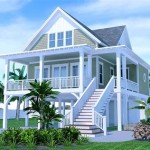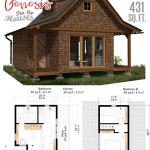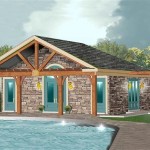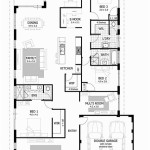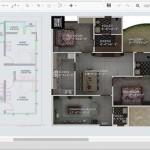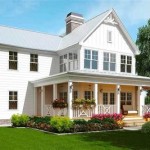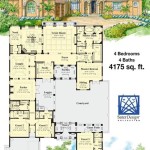Modern Narrow House Plans For Maximum Use of Limited Spaces
The increasing demand for housing in urban areas has led to a surge in the popularity of narrow house plans. These architectural designs are specifically tailored to fit tight spaces, often found in densely populated cities where land is scarce and expensive. Modern narrow house plans focus on maximizing usable space, incorporating innovative storage solutions, and optimizing natural light to create comfortable and functional living environments.
Narrow houses are typically defined as residences with a width significantly less than their depth. This ratio necessitates creative architectural solutions to overcome the inherent challenges of limited horizontal space. Design considerations include vertical expansion, strategic placement of windows and skylights, and the integration of multi-functional furniture. Efficient space planning is crucial to ensure that the house feels spacious and livable despite its narrow footprint.
The rise of narrow houses is not solely a pragmatic response to land scarcity; it also reflects a growing appreciation for minimalist living and sustainable design. Many modern narrow house plans prioritize energy efficiency and incorporate eco-friendly materials, aligning with the principles of environmentally conscious construction. The focus is on building smaller, smarter, and more sustainable homes that minimize their environmental impact while maximizing comfort and functionality.
Strategic Space Planning and Layout
One of the most critical aspects of designing a narrow house is the strategic allocation of space. Open-concept layouts are frequently used to create a sense of spaciousness and improve the flow of natural light throughout the home. Removing interior walls allows for better circulation and makes the overall space feel larger. However, careful consideration must be given to zoning and defining different areas within the open layout to maintain functionality and privacy.
Verticality is another key element in narrow house design. Utilizing the full height of the building through multiple floors, high ceilings, and strategically placed lofts can significantly increase the usable living area. Staircases become more than just functional necessities; they can be integrated as design features, incorporating storage solutions or serving as architectural focal points. Mezzanines and elevated platforms can be used to create distinct zones for sleeping, working, or relaxing, maximizing the use of vertical space that would otherwise be wasted.
Consideration should be given to the placement of essential functions. The kitchen, often a central hub of the home, should be designed with efficiency in mind. Compact appliances, pull-out pantries, and vertical storage solutions are essential for maximizing space. Bathrooms should be strategically positioned to minimize the need for lengthy plumbing runs, and designs incorporating wall-mounted fixtures and shower/tub combinations can save valuable floor space.
Furthermore, the use of transitional spaces, such as hallways and entryways, should be minimized or repurposed. Built-in storage along hallways can transform them into functional spaces, while entryways can be integrated into the main living area with clever storage solutions for coats, shoes, and other items. Every square foot should be thoughtfully considered and utilized to its full potential.
Innovative Storage Solutions
Effective storage is paramount in a narrow house plan. Traditional storage solutions, such as bulky wardrobes and cabinets, can quickly overwhelm a limited space. Instead, modern narrow houses rely on integrated, multi-functional storage that seamlessly blends into the architecture of the home. This includes built-in shelving, hidden compartments, and furniture with integrated storage capabilities.
One popular storage solution is the use of under-stair storage. The space beneath a staircase is often underutilized, but it can be transformed into a valuable storage area with custom-designed drawers, shelves, or even a small closet. Similarly, space under beds can be utilized with pull-out drawers or storage containers. Wall-mounted shelves and cabinets provide vertical storage without taking up floor space.
Multi-functional furniture is another essential element in maximizing space. Sofa beds, folding tables, and expandable dining tables can adapt to different needs, allowing for flexible use of the living area. Ottomans with built-in storage provide seating and storage in one compact piece. By choosing furniture pieces that serve multiple purposes, homeowners can minimize clutter and create a more open and organized living environment.
Another innovative storage idea is the use of vertical gardens or living walls. These not only add a touch of greenery to the interior but also provide a functional space for growing herbs and vegetables. By integrating storage and greenery, narrow houses can become more efficient and aesthetically pleasing.
Optimizing Natural Light and Ventilation
Natural light is crucial in making a narrow house feel more spacious and inviting. Limited width often means fewer windows, so strategic placement and design of windows and skylights are essential. Large windows on the front and rear facades can maximize the amount of light entering the home. Skylights can be placed in areas where windows are not feasible, such as hallways or bathrooms, to bring in additional natural light.
The use of light-colored walls and ceilings can also enhance the effect of natural light, making the space feel brighter and more open. Mirrors can be strategically placed to reflect light and create the illusion of more space. Transparent or translucent materials, such as glass doors and partitions, can allow light to flow freely throughout the home.
Proper ventilation is also essential for maintaining a comfortable living environment in a narrow house. Cross-ventilation, achieved by placing windows on opposite sides of the house, can help to circulate air and prevent stuffiness. High ceilings can also improve ventilation by allowing warm air to rise and escape. Mechanical ventilation systems, such as exhaust fans and air purifiers, can be used to supplement natural ventilation.
In terms of window design, operable windows are preferable to fixed windows, as they allow for natural ventilation. Awning windows, which open outward, can provide ventilation even during light rain. Clerestory windows, placed high on the walls, can bring in natural light while maintaining privacy. The careful consideration of window placement and design can significantly improve the overall comfort and livability of a narrow house.
The selection of building materials can also influence the amount of natural light and ventilation. Light-colored roofing materials can reflect heat, reducing the need for air conditioning. Breathable wall materials can allow for natural ventilation and prevent moisture buildup. By choosing materials that promote natural light and ventilation, homeowners can create a more sustainable and comfortable living environment.
In conclusion, modern narrow house plans require a holistic approach that considers space planning, storage solutions, and natural light and ventilation. By implementing these strategies, architects and homeowners can create functional, comfortable, and aesthetically pleasing homes that maximize the use of limited spaces.

2 Story House Plans For Narrow Lots Blog Builderhouseplans Com
Small Homes Top 5 Floor Plans Designs For Houses Architecture Design

Narrow Lot House Plans Home For Lots The Designers

Narrow Block House Designs Best Home Ideas For 10m 9m 8m 7m Blocks

Narrow 4 Bedroom House Plans Google Search Lot Home Design Floor Container

Simple Narrow Lot House Plans Houseplans Blog Com

22 Skinny Houses With A Narrow Footprint And Broad Impact Archdaily

Narrow Block House Designs Best Home Ideas For 10m 9m 8m 7m Blocks

Narrow Lot Traditional Neighborhood Development Plans

The Best 30 Ft Wide House Plans For Narrow Lots Houseplans Blog Com
Related Posts

